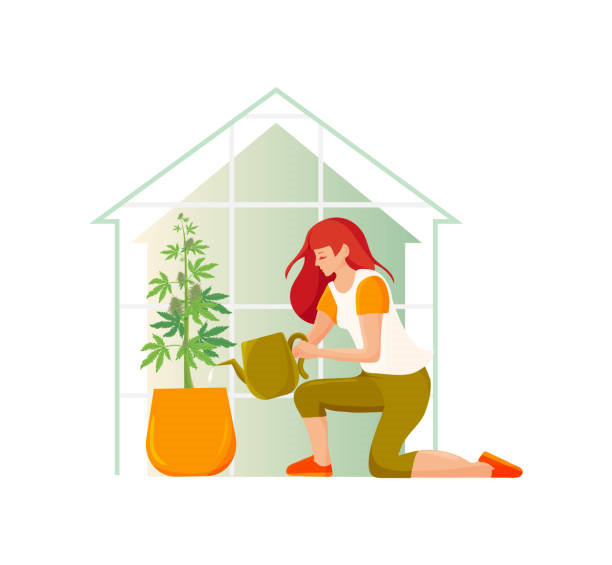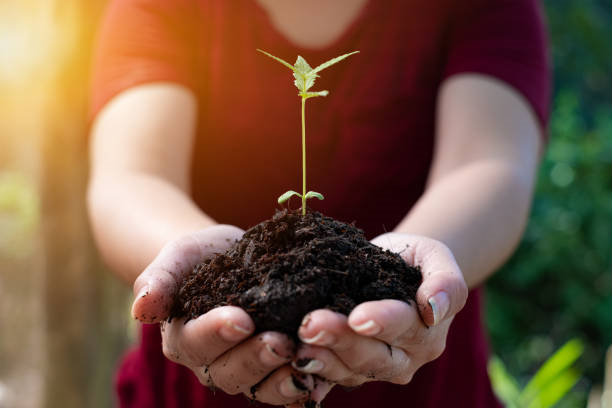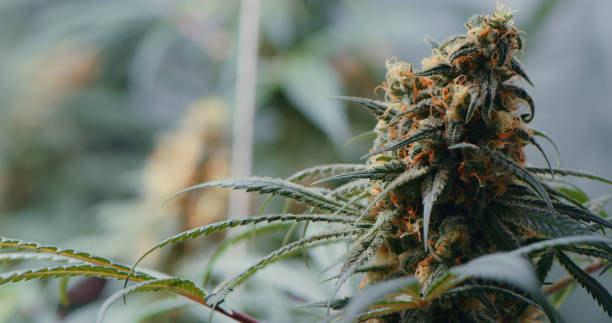
Cannabis Grow Cycle
Cannabis plants are highly sensitive to changes in light and temperature. Understanding the optimal growing conditions for your particular region is crucial especially for outdoor cultivators. In this article, we will focus on the Northern Hemisphere growing patterns, particularly New Mexico.
During the grow cycle, cannabis goes through four main stages: germination/seedling, vegetive, flowering and harvest. The stages of growth can vary slightly depending on the specific climate, strain, and cultivation techniques. For optimal plant health, it is important to understand the stages of plant growth. Indoor cultivators typically experience a faster vegetative state and a longer flowering state while outdoor cultivators typically experience the opposite. Outdoor cultivation allows for nature to aid with the transition between these stages as the light cycle naturally changes. Cultivating indoors relies on the growers to manually change the light exposure for each stage.

Spring – Germination/Seeding Stage
At the onset, one of the biggest decisions a cultivator must make is what they want to grow. In New Mexico, the cannabis growing season begins in the spring, around the end of March into early May. This is when temperatures start to rise, and the risk of frost has passed. This is the optimal time for outdoor growers to start germinating seeds or transplanting seedlings into the ground.
Cannabis seeds come in many forms such as regular, feminized, and auto-flower. Feminized and auto-flower seeds contain only the y chromosome which provide a strong probability of obtaining female plants. Regular cannabis seeds, however, contain both the x and y chromosomes. This means the plant has a 50/50 chance of producing a male or female plant.
Male plants produce high amounts of pollen and very few cannabinoids while female plants produce the impressive cannabis flower that consumers see on the shelves. Pollen from a male plant will contaminate any female plant it comes in physical contact with. This is detrimental to crops of feminized plants because the plant will go through a change called hermaphroditism. To avoid this concern, growers often turn to cannabis laboratory DNA testing. Through the analysis of plant DNA, laboratories provide growers with the information they need to better understand the crop they’re working with.

Summer – Vegetive Stage
he summer season provides the ideal conditions for cannabis vegetation. Cannabis plants thrive in warm temperatures between 70°F to 85°F (21°C to 29°C) during the day. They also require long days with plenty of sunlight, as cannabis is a photoperiodic plant, meaning it relies on light cycles to trigger each growth stage. During the vegetive stage, cannabis plants experience an increase in stem, root, and foliage production. The perfect blend of light, water and nutrients provides the plant with everything it needs to build a strong structure.
Indoor cultivators have an advantage when it comes to determining how long the vegetative stage lasts. Indoor operations are able to grow plants as big and tall as they want before making the decisions to manually change the light cycle. Once the light cycle is changed, the plant will start the transition into the flowering stage. Outdoor cultivators don’t have this advantage as they rely on natural lighting throughout the entire process. The plants typically have a longer vegetive stage as they obtain a full spectrum of light during this stage. The plants will remain in this stage until the amount of natural light in a day starts to decrease. Depending on the strain of cannabis and growing techniques, the length of the vegetative stage determines the overall yield and quality that will be produced during the flowering stage.

Fall – Flowering Stage
As fall approaches and the days become shorter, cannabis plants naturally start to transition into the flowering stage. The flowering stage is often the most critical period for cannabis testing, as it is when the plant produces cannabinoids, terpenes, and other compounds. The exact timing of the flowering stage can vary based on the strain, but it typically occurs after the fall equinox when the days get shorter, and the nights get longer. Indoor cultivators transition plants into this stage by changing the light cycle to 12 hours of light and 12 hours of dark. This lighting change mimics the natural change of seasons that is seen outdoors.
During the flowering stage, the plant will produce white hair pistons and sticky resin on the leaves. The pistons grow and develop trichomes which hold cannabinoids and terpene profiles. The final potency of the cannabis flower is determined by how long the plant spends in this stage. Cannabis testing can be performed multiple times during the flowering stage to track the development of these compounds, as their concentrations tend to increase as the flowers mature. It is important to test for the presence of pesticides and other contaminants during the flowering stage as well. This ensures that the final product is safe for consumption.

Winter – Harvest/Curing Stage
Depending on the strain and environmental conditions, the harvest time for outdoor-grown cannabis usually begins in late fall to early winter. It’s essential to monitor the trichomes on the cannabis flower to determine the optimal harvest time. Outdoor harvests are typically completed before the onset of frost or adverse weather conditions. Indoor harvests eliminate the threat of freezing temperatures; however, cultivators need to pay close attention to the development of the cannabis flower. Harvesting too early won’t allow the plant to fully mature resulting in a lower potency product. If harvested too late, the key components of cannabis, such as THC and CBD, will start to degrade.
Once harvested, the plant goes through a final process of curing and drying. Improper storage of harvested cannabis plants or cannabis products can create conditions conducive to mold growth and mycotoxin production. Factors such as high humidity, inadequate airflow, and warm temperatures can contribute to the growth of mold and the production of mycotoxins. Implementing good agricultural and manufacturing practices, such as maintaining proper humidity levels, ensuring proper ventilation, and implementing quality control measures, can help minimize contamination during this point. Regular testing of cannabis product during this stage allows for cultivators to closely monitor the further development of their yield.
Summary
Cannabis is a versatile plant that can thrive in various environments, but it requires specific conditions to maximize its growth and potency. Indoor and outdoor cultivation have distinct factors that contribute to the overall health and quality of the cannabis plants. In regions with colder climates or where growing outdoors is not feasible, indoor or greenhouse cultivation provides more control over the growing environment, allowing for year-round cultivation regardless of the external seasons.
Testing cannabis during different parts of the grow cycle help to ensure the overall quality of the product. By assessing the plant and its components at various points, growers and producers can monitor the development of desired compounds, detect any issues or deviations, and make informed decisions on how to proceed.
For more information, please visit our website bklabsnm.com or contact us at info@bklabsnm.com with any inquiries.
Written by Veronica Martinez June 2023
